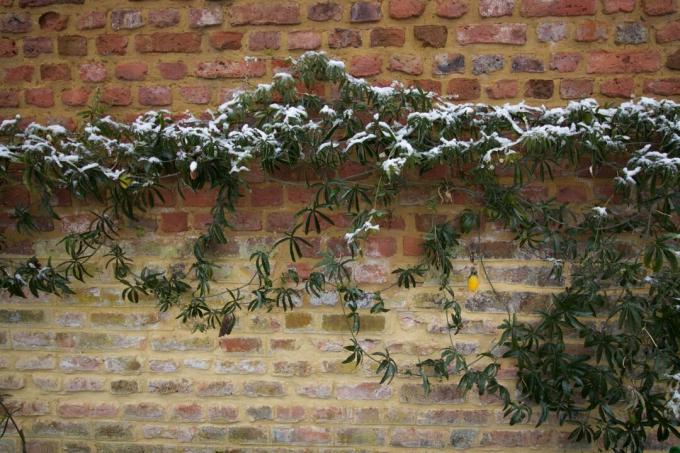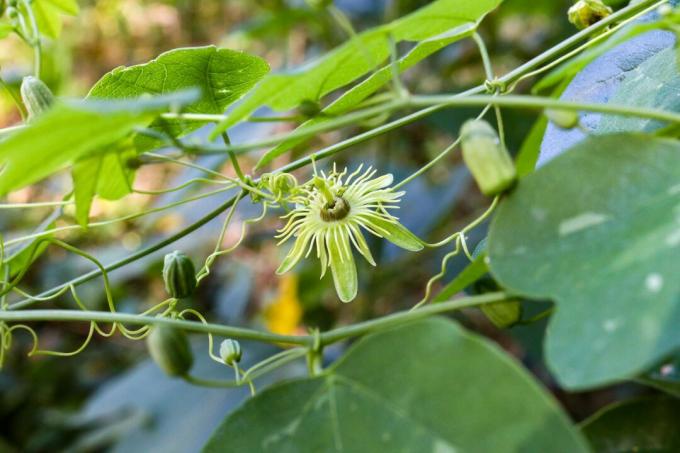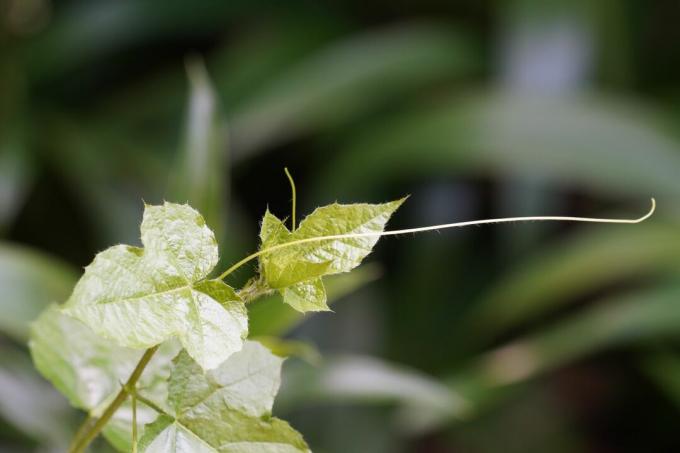In order to be able to enjoy the passion flower in the years to come, it is important to overwinter the plant properly, depending on the species and region.

In milder regions of Germany, some types of passion flower (passiflora) even outside through the winter, as we will show you below. For the others passiflora-Species that are not certainly hardy, there are tips for overwintering indoors.
contents
- Which passion flowers are hardy?
-
Overwinter passion flowers
- Passiflora overwinter outside
- Overwinter passion flowers indoors
Which passion flowers are hardy?
Since passion flowers originate from the tropical and subtropical regions of the world, they are not prepared for the Central European winter. But: By choosing the right variety and with a little preparation, it is possible to overwinter passion flowers - some even outdoors.

The following passion flowers are conditionally hardy - so they can overwinter outdoors with winter protection:
- Blue passion flower (Passiflora caerulea): The blue passion flower, which is traded quite frequently in Germany, is hardy and, with the right protection, survives mild winters with temperatures down to – 9 °C. Some varieties such as 'Constance Eliott' and 'Chinensis' can also tolerate temperatures down to -15 °C.
- incarnate passion flower (Passiflora incarnata):Passiflora incarnata is a hardy passion flower and survives even harder winters with temperatures down to – 20 °C if you protect it from frost.
- Yellow passion flower (Passiflora lutea): This species also withstands temperatures below – 15 °C.
The air temperature is less important for these species than the soil temperature. Potted plants are more vulnerable to frost due to the small volume of substrate and exposure to wind and should definitely be overwintered indoors. If the species mentioned above have been planted in the bed, they can remain outside with winter protection. In cold winter temperatures, however, the above-ground parts of the plant die off. In the spring, however, the plant will sprout again, provided that the outlasting organs in the soil have not been damaged.
Tip: Unlike many other plants, hibernation is not important for passionflowers to flower. With the right conditions, i.e. enough warmth and light, it could also produce flowers all year round. Due to the weather in our latitudes, the passion flower is ordered to rest, so to speak.
Overwinter passion flowers
While some species can tolerate brief periods of freezing temperatures, it's still safest to overwinter passionflowers indoors. But you can do it with mature, healthy plants in mild regions, such as wine-growing regions definitely try it outside as well - as long as the hardy passion flower is in the bed and not in the pot is held.

Passiflora overwinter outside
Although the passion flower species mentioned are quite hardy, they need some preparation and protection from winter and frost. It is important to overwinter only planted and healthy passion flowers outside. Passion flowers should be planted in a sheltered place - for example near a bush, a house wall or a wall, at least behind a windbreak. To protect the roots from the cold, cover them with a 7-10 cm thick layer of mulch, for example ours Plantura organic pine bark. This not only protects against frost, but also against drying out of the soil in summer. In addition, unwanted wild herbs are prevented from sprouting. At very low temperatures, around -5 °C, the whole plant should be wrapped in fleece. The most important thing is to protect the root - because as long as it survives, the passion flower can sprout again in spring. Passion flowers that are overwintered outside are not cut back in autumn, but only in spring if parts of the above-ground biomass have survived the winter.
Summary of wintering passion flowers outdoors:
- Do not hibernate outside in pots or tubs
- Plant passionflowers in a sheltered spot
- Cover roots with mulching material
- Protect shoots with fleece if necessary
Overwinter passion flowers indoors
In order to overwinter passion flowers indoors in the pot, the plant is first cut back in autumn. You can proceed generously and shorten the main shoots to 15 cm, leaving about five eyes on the shoot. With larger, branched plants and enough space in the winter quarters, only the side branches can be cut back to two or three eyes.
Then it's time to put the passion flower in its winter quarters. It should be light and cool there. Most passion flowers do very well in winter with temperatures of around 10 – 15 °C. Some also tolerate lower temperatures of up to 5 °C, such as the passion fruit (Passiflora edulis). Others, like the red passion flower (Passiflora racemosa), are more warmth-loving and like it a bit warmer, up to about 18 °C.
In winter, all passion flowers are watered less - but the substrate must not dry out completely. The higher the winter temperature, the more it needs to be watered. But then more light is needed, which can be provided by a plant lamp, for example. If there is not enough light available when the temperature is warm, overwintering the plant costs a lot of energy. This is then missing for the spring shoot or makes the passion flower susceptible to diseases and pests. There is no fertilizer at all in winter. This only starts again at the beginning of the growing season in spring.

Summary of wintering passionflowers indoors:
- Pruning the passion flower in autumn
- Bright and cool location at 10 - 15 °C, some species warmer or cooler
- Water less
- Don't fertilize
- Use a plant lamp depending on the temperature: the warmer, the brighter
After the winter, the passion flower sprout again, because then the growing season begins. How you die Caring for passionflower properly, you can find out in our special article.



